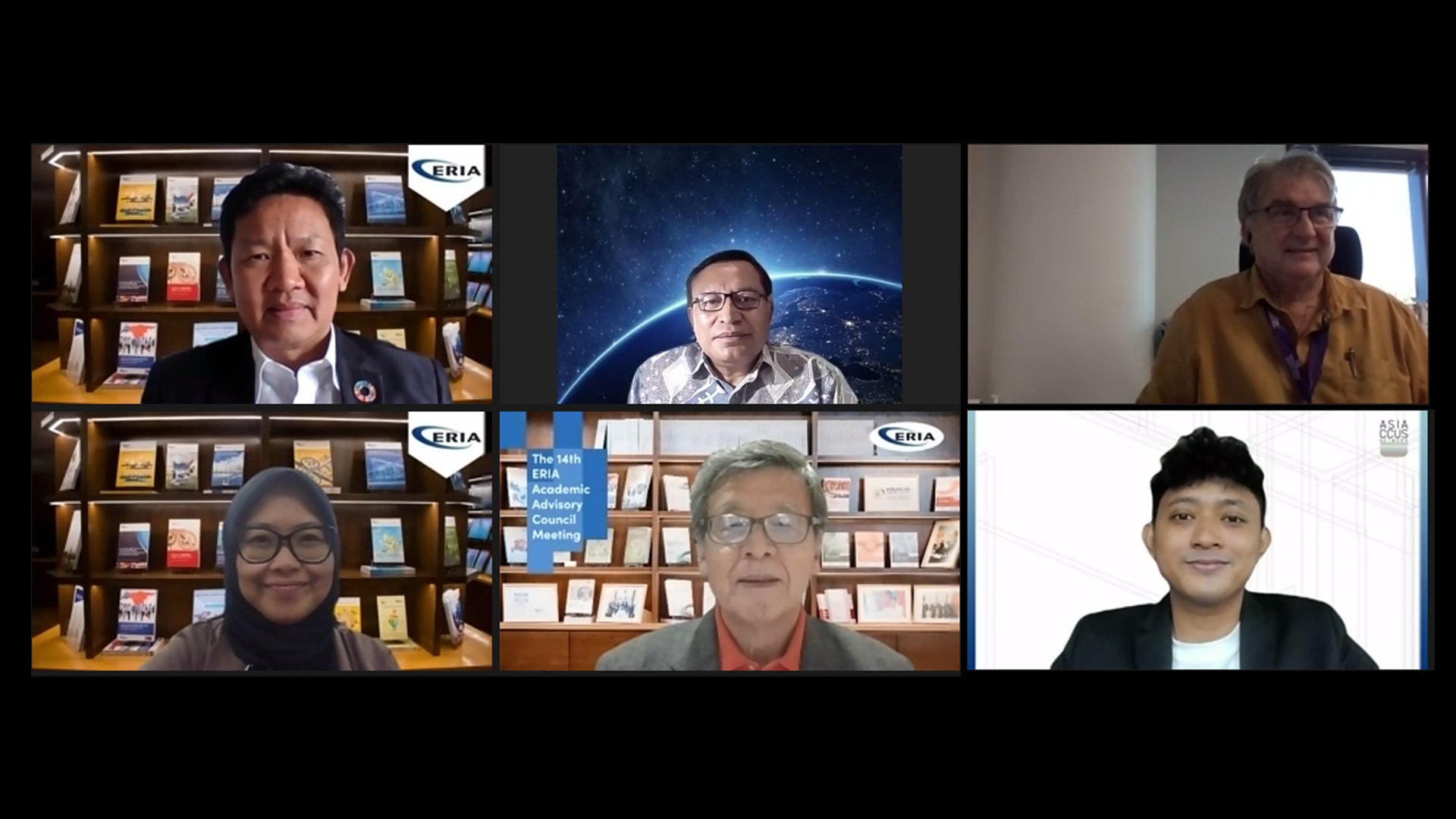Australia’s Northern Territory’s CCS Hub Project to Facilitate Carbon Reduction Initiatives in Asia
The 9th Knowledge Sharing Virtual Conference, 30 June 2023: The Australian government is a strong proponent of carbon-reducing technologies including Carbon Capture and Storage (CCS) and Carbon Capture, Utilization and Storage (CCUS). Australia continues to spearhead initiatives and programmes on clean technology to strengthen domestic and international collaborations and to lower the costs of these innovations. The Northern Territory is an Australian territory rich in gas reserves and has subsequently pushed ahead with its CCS hub better known as the Middle Arm CCS facility which is rapidly undergoing development. The project seeks to bolster the territory’s economy through the pursuit of low-emissions business activities, support the Australian government’s climate commitments, and assist the Asian region’s carbon reduction plans. The background and objectives of the Middle Arm CCS facility were the highlights of the 9th ACN Knowledge Sharing Conference. The event was hosted by the Economic Research Institute for ASEAN and East Asia (ERIA) which serves as the secretariat of the Asia CCUS Network (ACN).
Mr Shigeru Kimura, Special Advisor to the President on Energy Affairs, ERIA delivered the Opening Remarks where he commended the Australian government’s progress in establishing a supportive ecosystem to realise CCS and CCUS projects as well as increase its application. Mr Kimura explained that the Northern Territory’s significant potential of carbon dioxide (CO2) enhanced gas recovery and depleted wells facilitates its aim to become a CCS hub. The success of the hub is largely influenced by CO2 transportation, namely shipping, which presents the Asian region with the opportunity to connect its transportation systems and partake in the CCS value chain.
Event moderator, Mr I Gusti Suarnaya Sidemen, Expert on CCS/CCUS, ERIA set the stage of the conference entitled “Australia Experience on CCUS: Middle Arm – The Northern Territory’s CCS Hub.” The territory’s economy is heavily dependent on mining and petroleum in which gas reserves in excess of 30 trillion cubic feet (Tcf) offshore and 500 Tcf onshore have been identified and ‘will become the backbone of future economic development.’ The existing CO2 storage sites are all offshore since it is the quickest and easiest way to facilitate the rollout of the project. As climate change leads to sweltering heat and sea level rise, the Northern Territory government is aware of the urgency of taking action on climate change. Launched in 2021, the Middle Arm CCS facility strives ‘to reduce emissions in northern Australia and accelerate the creation of low-emissions manufacturing industries.’
The main speaker of the conference was Dr Howard Smith, Director Industrial Ecologies and Government Lead Carbon Capture Utilisation and Storage (CCUS), Gas Taskforce Unit, Department of the Chief Minister and Cabinet, Northern Territory Government. Dr Smith explained that the Northern Territory seeks to improve its AUD 24 billion economy to AUD 40 billion by 2030 mostly through oil and gas development. One of the goals of the CCS hub is ‘to become a world-class gas production, manufacturing, and services hub by 2030’ in addition to realising net-zero emissions by 2050. ‘Our economy is now going to be built on low-emissions manufacturing,’ Dr Smith stated. Developing the Northern Territory’s extensive onshore and offshore gas resources will be crucial in propelling the new economy.
Dr Smith explained that the planning for the Middle Arm CCS hub began in late 2018 to early 2019 and required various assessments, such as land availability and the resources needed. ‘It’s important to understand that when we started working at Middle Arm, we always entered into work with a degree of flexibility so that we recognise if certain parts of our plan were not going to happen, we still have areas where we could bring in other projects which also met the requirements of low-emissions precinct,’ he added. The Northern Territory has allocations for hydrocarbon, utilities area, carbon capture usage and storage areas, hydrogen production, and areas for critical mineral production for the Middle Arm facility. Thus far, the engineering, design, and feasibility studies have been cleared and the government is working on the business case. Dr Smith shared that Decarbonisation Working Groups were created to determine the policies the government would need to ensure an effective regulatory environment.
The government is further exploring the possibility of using CO2 to manufacture value-added materials, such as urea, methanol, green hydrogen, jet fuel, building products, and mineral carbonates. Dr Smith shared, ‘As further opportunities to decarbonise Middle Arm arise, we are looking to plug in solar power and clean water so we can actually go through this process of using waste and our resources to make bulk commodities that we can export out through Middle Arm that are low-carbon and meet the requirements of our low-emissions policies and contribute to our AUD 40 billion economy.’
The Northern Territory is further working with the Timor-Leste government and the liquified natural gas industry to secure access to the Bayu-Undan field as a CO2 depository. However, the Northern Territory remains responsible for ‘the regulatory requirements for Middle Arm, the CCS structure, and the pipeline facilities that go from our onshore to our 3 nautical miles limit.’ The field has a well depth of around 1.8 kilometres (KM) which is important given that the depth will maintain the CO2 as a supercritical fluid. Plans to send up to 10 million tonnes (MT) of CO2 annually from the CCS hub to the Bayu-Undan field are set to commence by the end of 2025 or early 2026. The field can hold a minimum of 250 MT of CO2 and operate for approximately 25 years, and as part of the first phase, CO2 will be sent to the field for disposal. Dr Smith stipulated that there is also a large possibility of other saline aquifers in the Bayu-Undan field.
The Northern Territory government has also identified the Petrel Sub-basin, specifically two fields, as CO2 depositories and together, the fields can hold up to 15 gigatonnes (GT) of CO2. The first field, G-7-AP, will be managed by INPEX and its joint venture partners while the second field, G11-AP, will be managed by Santos and its partners which include Chevron. These fields, together with the Bayu-Undan field, would increase the storage capacity of CO2 to 15MT/year by 2030 and up to 25MT/year by 2040. There are negotiations at the federal and territorial levels to address regulatory and environmental issues although the final investment decision for the Petrel sub-basin will likely be made between 2026 – 2027 while operations are to commence by 2028 or 2029.
The motivation to seriously address carbon emissions in the territory stems from an uptick of CO2 emissions in the past decade from 2MT/year to 8MT/year driven by economic activities. Dr Smith explained, ‘What became clear was those exportable volumes of alternative energies won’t be available to reduce emissions from the Northern Territory’s industrial economy prior to 2030. We had to go down the alternate route at managing CO2 emissions.’ Through the Middle Arm facility, Australia is aiming to further take CO2 from its trading partners and near-neighbours in the Asia-Pacific region to the best of its ability. ‘We are looking at the hub as a platform not just about capturing CO2, but providing a full service into the region and helping our neighbours develop the same capacity amongst themselves,’ Dr Smith shared. Moreover, there is a level of understanding concerning the challenges emerging economies and low-income countries face in realising CCS facilities hence the hope is that the Middle Arm facility ‘would take some of the pressure off.’
During the Open Discussion session, several questions were raised which deepened the discussions on the Middle Arm facility and CCS as well as CCUS technologies. To improve the awareness and understanding of the risks and benefits of CCUS and CCS, Dr Smith underlines the importance of reaching out to local communities as they are the ones most affected by such projects. Education at the community level is integral which can be done through roundtable or group discussions, consultations, working groups, and face-to-face discussions, particularly with those who oppose CCS and CCUS. At a higher-level involving scientists and government officials, the key is to promote information exchange to make these technologies possible.
Dr Smith additionally shared that the Northern Territory government does not have incentives for implementing carbon capture beyond providing people with the land and an expedited approval process. The territory received the full backing from INPEX and Santos to pursue CCS projects thus making it possible to survive without incentives. Dr Smith cites its steadfast relations in addition to common goals with the main industry, federal government, joint venture partners, and the Commonwealth Scientific and Industrial Research Organisation for the swift progress of the territory’s CCS hub. He stated, ‘We’ve got a strong collaborative group to make things happen, and even though we haven’t finalised it yet, we’ve got the necessary regulations and legislation to make it happen.’
Regarding a question on the Australian government’s support in establishing the necessary legislation and regulations to promote the Middle Arm facility, Dr Smith underscored its complexity. The Northern Territory currently does not have an onshore CCS regulatory framework; however, the easiest and fastest way is to use existing petroleum legislation and ‘modify the definitions of what can be carried in the pipeline to include CO2 and hydrogen as well as normal petroleum type products.’ Doing so would make it possible to transport CO2 into Australian Commonwealth waters. Dr Smith emphasised, ‘In terms of regulations, we are well aware of what we need to do without cutting corners on standards, safety, or any other measures like that.’
On managing risks and post-closure liabilities, Dr Smith explained that the responsibility will rest with the operators as is typically implemented during the operational phase and then, it will be transferred to the government at the appropriate time. The liability for the Bayu-Undan field is assumed to rest with Timor-Leste although it is still being discussed between the federal and Timor-Leste governments.
Dr Han Phoumin, Senior Energy Economist, ERIA gave the Closing Remarks where he outlined the rapid development of CCUS technology and its deployment which has seen a growth from $11 billion in 2017 to over $19 billion in 2022. In 2022, 61 new facilities were added to the timeline, 30 projects are in operation, 11 are under construction, and 153 are in development. Dr Phoumin expressed his hope that the Northern Territory’s rapid advancements with the Middle Arm facility can also happen among ASEAN and Asian countries. Dr Phoumin, ‘I wish to encourage Asian countries to accelerate the development of the CCS value chain and de-risk all hurdles including regulatory frameworks, permit licenses for the safety of CCUS, the carbon market, and carbon management as part of the trickle of CCUS projects and support of clean technologies.’

